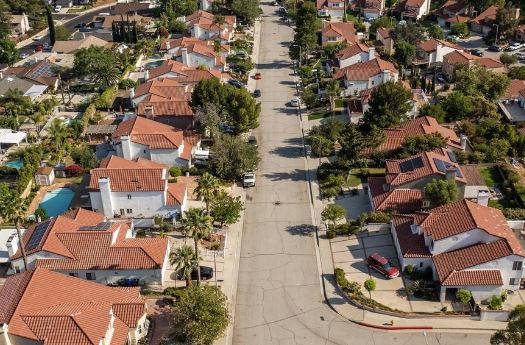The global economy, commercial real estate included, has forced some lenders and investors to sit on the sidelines. Changing interest rates, inflation and recent shifts have resulted in investors losing deals and having to push the pause button. The volatility has slowed down activity and market rates have moved quickly.
Some experts believe interest rates for debt could rise 200 to 300 basis points, which would not favor borrowers. Not only will that make it challenging to underwrite deals, but many will no longer even pencil, especially those expecting to find a low cost of capital.
he global economy, commercial real estate included, has forced some lenders and investors to sit on the sidelines. Changing interest rates, inflation and recent shifts have resulted in investors losing deals and having to push the pause button. The volatility has slowed down activity and market rates have moved quickly.
Some experts believe interest rates for debt could rise 200 to 300 basis points, which would not favor borrowers. Not only will that make it challenging to underwrite deals, but many will no longer even pencil, especially those expecting to find a low cost of capital.
The historically low interest rates over the past 10 years have created an environment where the norm was cheap money. That is swiftly changing, and borrowers must adjust. Debt is getting more expensive, though I have seen that equity is cheaper in many instances as investors accept lower yields. Overall, the reality is lenders are not underwriting like they used to.
We are seeing a flight to fixed rates as borrowers attempt to reduce their exposure to rising rates and skyrocketing interest rate caps costs. In times when interest rates were flat or lower, the cost of interest rate caps was cheap. But costs have soared in the past year. Additionally, some shorter-term investors are shifting strategies (paywall) to a longer-term hold since they cannot find strong deals to replace existing assets.
The rise of interest rates is putting downward pressure on loan dollars and overall loan-to-value ratio which has reduced lending activity. Some seller servicers and DUS lenders are pushing the agencies to reduce their debt service coverage requirements to mitigate the loss of loan dollars, but it is not likely that Fannie Mae or Freddie Mac will change any requirements. There is some room in the spreads to be reduced since they have been lower in past.
Forecasting
There are changes and adjustments underway in the marketplace. For now, it doesn’t look like any agency relief is forthcoming, and that is expected to continue holding back deal flow. In the second half of 2022, I predict that activity could accelerate as the agencies look at their allocations and realize they need to push more capital into the marketplace to meet their annual goals. But the reduction of spreads remains uncertain and bridge loan spreads are increasing.
Real market dislocation may be ahead and that could result in a 10% or 15% drop in asking prices. Opportunities may surface for deals that are falling out now to get sucked up by those waiting in wings. We may see institutional capital move into the middle market space and pursue smaller deals or explore secondary markets that they might not have looked into before.
Higher rates might allow these institutions to absorb lower leverage since they are flush with cash. The market was previously driven by 1031 exchange opportunities, but investors will need more to put down and pay more to win deals. We continue to see those buyers active because many are selling or have sold, so they need to move into a new investment before the tax advantages they gained evaporate. It will be interesting to see how investors like institutional groups handle lower leverage.
On the lending side, especially in the bridge debt space, debt yield requirements are being raised and that will affect loan amounts in the lower levels. Investors may not buy assets at a low cap rate, electing to chase yield in other sectors such as limited-service hotels.
Market disruption brings opportunities for those who are savvy and patient. First, some of the competition will be reduced. I believe the market has been too frothy, so taking a breather may be the pause needed to return to sound fundamentals.
Second, a slowdown will allow those on the sidelines or new entrants previously boxed out to come in. The market ahead may be one in which lower returns become popular. Lenders may focus on de-risking strategies and pull back from certain markets where they have more portfolio exposure, helping to ensure diversification. Smart money could decrease leverage 5% from the current loan-to-cost ratio (paywall), currently in the 70% to 75% range, and could help reduce the leverage offered in the bridge lending space.
Completing construction deals is a bit more troubling today because rent increases are not keeping pace with construction costs. That’s causing projects to enter a zone where they no longer are viable. Traditionally, construction lenders have focused on the projected yield on cost (the projected net operating income divided by the total project cost) to determine viability. For multifamily, this figure sits around 6% (the lowest it has likely ever been).
Lenders want to see a spread between the yield on cost and the property’s market cap rate to ensure profitability. For example, if a multifamily property sells at a 4.5% cap rate and the yield on cost to build to finished product is also 4.5%, there’s no profit incentive to move forward.
We are seeing deals with low yield on cost emerge due to construction cost increases. The developer then must find other ways to make a project pencil, though trying to do so via higher rents could be problematic. Construction budgets from just a few months ago are, in many cases, significantly higher.
Still, many lenders and investors are sitting on large amounts of cash as we enter this uncertain market. Sellers who have divested assets, or investors who have de-risked portfolios, are now in a position to weather what may come and could capitalize on opportunities that arise. Even if they elected to stay put, I predict they will be just fine since they hold real assets that provide hedges against inflation and have proven to be a sound place to invest in and place money in.
There have been moments when we’ve needed to tread with more caution. This is probably one of those times.









